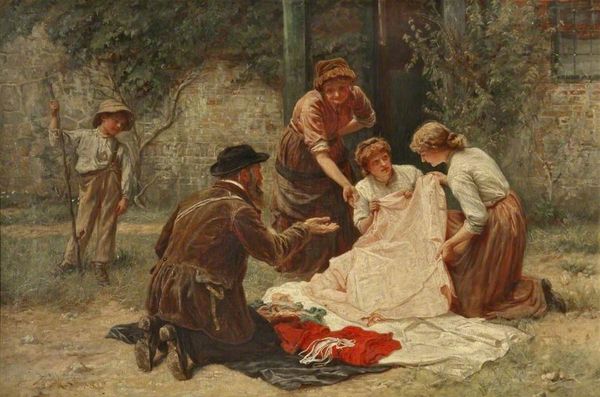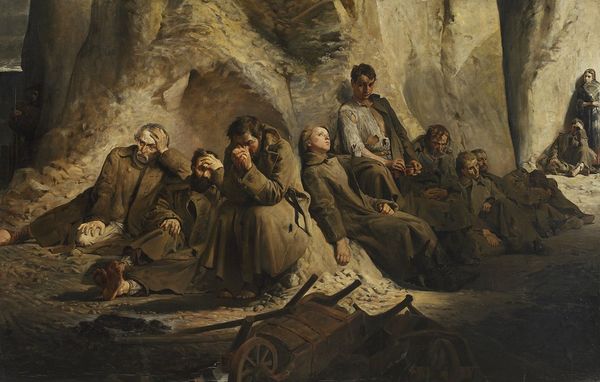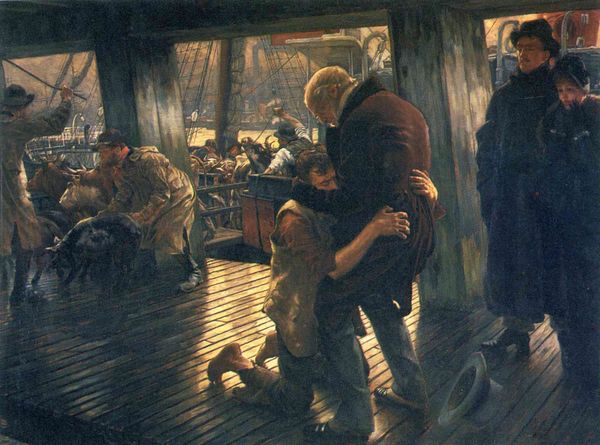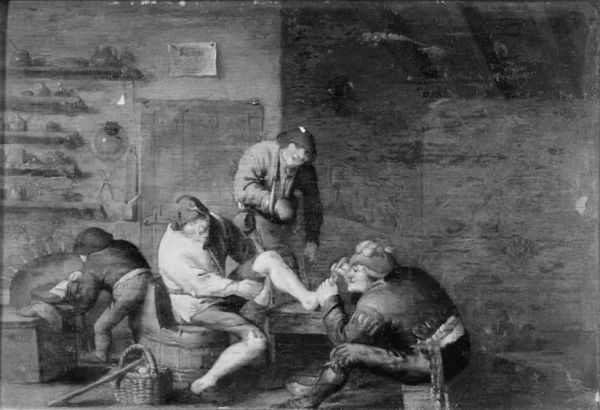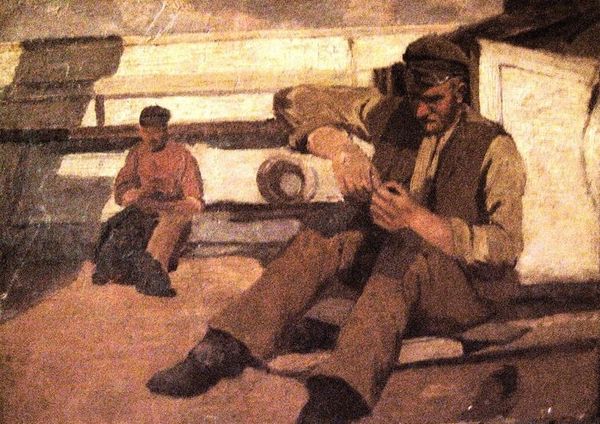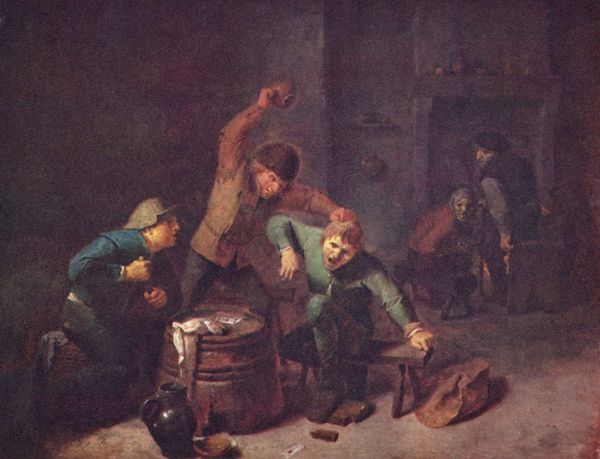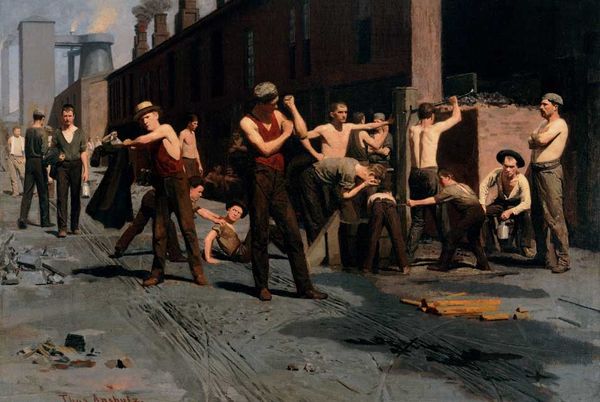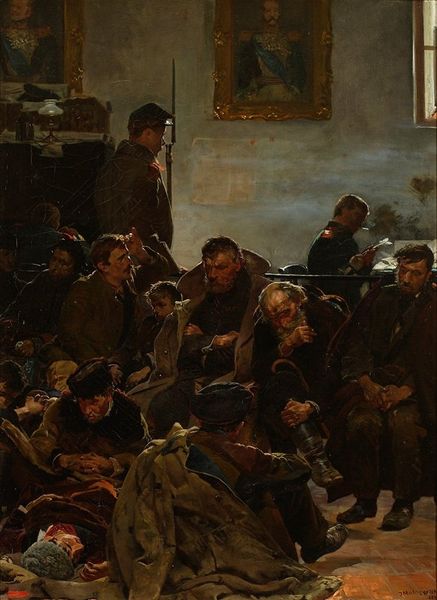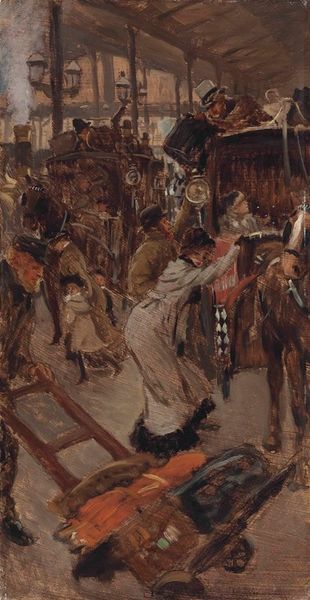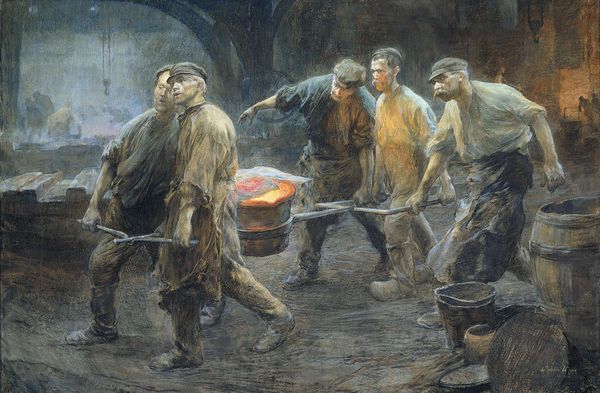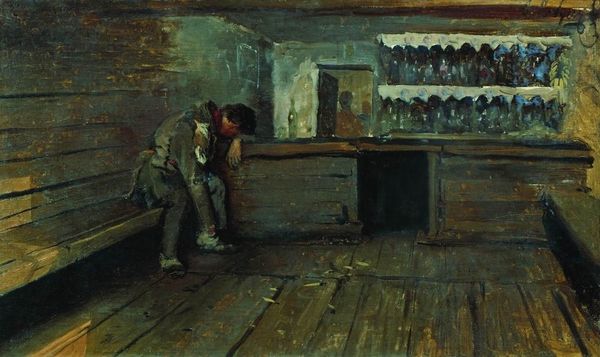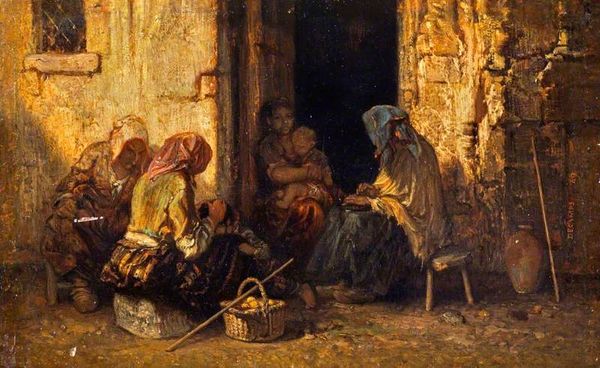
oil-paint
#
oil-paint
#
landscape
#
oil painting
#
group-portraits
#
human
#
genre-painting
#
realism
Copyright: Public domain
Curator: This is Briton Riviere’s "Giants at Play," an oil painting completed in 1882. What are your initial impressions? Editor: It’s striking how the heaviness of the workers contrasts with the playful energy of the small dog. There's a feeling of exhaustion mixed with a surprising tenderness in the scene. Curator: Exactly. We have these working-class men taking a break, and Riviere positions them almost heroically, bathed in light. Consider the social and economic climate of Victorian England; such portrayals offered a subtle commentary on class and labor. Editor: Yes, there's a clear class dynamic highlighted by the men’s attire and their weariness, a kind of shared symbolism of the working class, in direct contrast to the frivolousness suggested by the dog. The puppy also brings to mind notions of youth and optimism. Does the little animal perhaps symbolize a hope for future generations, while the men reflect the harsh realities of the current one? Curator: A hopeful reading indeed! Beyond that, think about the symbolism inherent in representing the working class at leisure, humanized. How does that subvert expectations, considering prevailing stereotypes of the time? Also the presence of a child playing, right? Is that related? Editor: Absolutely, that's precisely it. Leisure becomes a space for commentary, a moment of humanity amidst the dehumanizing forces of labor. In terms of iconography, the cracked and aged stone floor almost becomes an emblem of struggle, and the brick wall encloses them into some prison or cage. The whole setup is visually very suggestive. It looks like the little animal will find its way out soon... Curator: Well observed! Riviere often depicted animals with profound emotional depth, infusing them with human-like qualities. He often had an approach on depicting power structures as they existed. And considering "Giants at Play" in that context might let us reconsider some ideas regarding how these subjects can become powerful in some ways, as opposed to how oppressive environments keep on restricting their actions and life conditions. Editor: True. Looking at the symbolic details, such as the feather the puppy’s fixated on, they appear like minor distractions offering glimpses of momentary delight that somehow allow these men to bear their heavy circumstances and be human. It adds another layer to our comprehension of British Realism, does it not? Curator: Agreed. I find that the historical perspective deepens my connection with this artwork. The symbols that we discussed truly enhance our empathy with people of that time. Editor: And to me, the dog embodies an interesting point—continuity. In one hundred years the humans might all be gone but puppies are always with us. It certainly provides an outlook with lasting value.
Comments
No comments
Be the first to comment and join the conversation on the ultimate creative platform.
